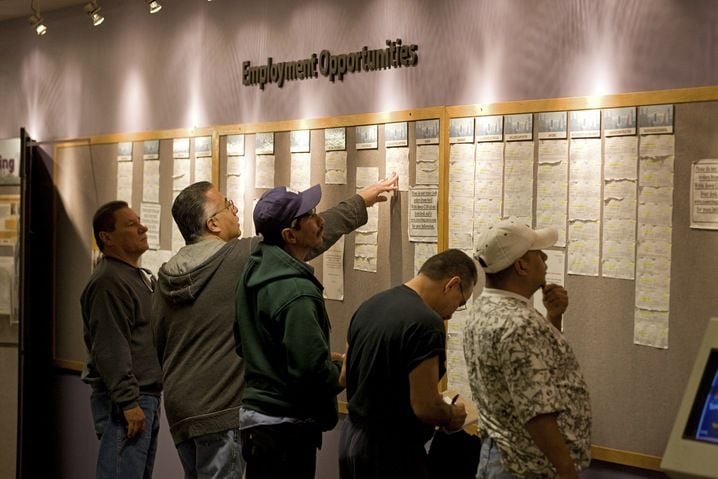GBP/USD Rate: Sell-Off Accelerates Following US Jobs Report

The monthly payrolls report from the U.S Bureau of Labour Statistics showed a favourable rise the number of Americans finding work in June.
Non-farm payrolls (NFP) rose 222,000 in June, compared to the rise of 152,000 a month earlier in May; the data beat the consensus estimate of 179,000 jobs.
May’s jobs result was revised from the initial print of 138,000.
The headlines were good for the Dollar as the data appeared to help solidify market expectations of another Federal Reserve interest rate hike by the end of 2017.
The Pound to Dollar exchange rate fell more than half a percent after the release, moving down from 1.2970s to the 1.2850s.
The declines here are an extension of the losses suffered by Sterling in the wake of the poor manufacturing and industrial production data witnessed in the London morning session.
The Euro-Dollar fell less steeply, from 1.1420s to the 1.1380s.
Markets are already foerecasting one by December, but the robust job numbers could bring that time forward to the autumn or even earlier.
Unemployment and Wages Take the Shine of the Report
Despite the positive payrolls data, the unemployment rate actually ticked up slightly to 4.4% from 4.3% previously, when analysts had expected no change.
"We have the jobs, but the wage growth is still absent," says Chris Beauchamp at IG. "That has been the message for months now on NFP day, and today was no exception. After months of sub-par figures, employment data rebounded, but the rising trend in wage growth from 2015-2017 looks to be at an end. This will no doubt be a problem for the US administration, but also of course for the Federal Reserve, which faces a robust economy, creating plenty of jobs, but with the wage and inflation elements of the picture still absent."
Average hourly earnings rose by 0.2% in June compared to May, which fell below market expectations of an increase of 0.3%.
May’s previous 0.2% advance was downwardly revised to 0.1%.
On an annualized basis, wage inflation rose 2.5% in June, below forecasts for a 2.6% rise.
The increase in wages is being closely monitored by the Federal Reserve for evidence of upward pressure on inflation.
Economists generally consider an increase of 3.0% or more to be consistent with rising inflation.
CIBC Economics noted the rise in jobs was not accompanied by comparable wage gains.
“US payrolls showed a significant rebound in employment, but still little progress in terms of wage inflation,” said CIBC’s Andrew Grantham.
The rise in the unemployment rate was put down to a rise in labour force participation, ie the total number of people searching for work. “Wages inflation remains fairly muted. Average earnings rose 0.2% on the month (consensus 0.3%) and a downward revision to the prior figure meant that the year-over-year rate of inflation, at 2.5%, was also a little below expectations,” noted Grantham.
“Wages inflation remains fairly muted. Average earnings rose 0.2% on the month (consensus 0.3%) and a downward revision to the prior figure meant that the year-over-year rate of inflation, at 2.5%, was also a little below expectations,” noted Grantham.
The lack of upward propulsion in wages is one reason why CIBC’s Grantham - unlike others - sees little chance of a change in Fed policy stance.
“There's something in this report for hawks and doves alike on the FOMC, and as such it shouldn't change expectations that the Fed will take a pause from rate hikes in September to start the balance sheet unwind, before hiking again later in the year,” he concluded.





